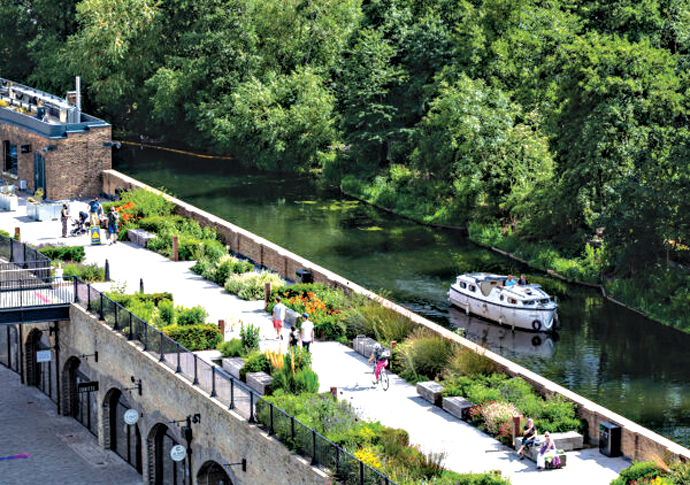The ever-changing nature of the historic railwaylands
Restored patch of London was once riddled with crime and unemployment
Friday, 15th December 2023

The canalside walk at Coal Drops, King’s Cross
KING’S Cross has never stood still.
From the 1800s construction wave, to canals, to housing, to train stations, to goods yards – it’s a patch of London that knows a thing or two about change.
Fast forward to 2023, King’s Cross is home to some of the best examples of Victorian buildings sensitively restored for modern use. From the Granary Building to the German Gymnasium and Coal Drops Yard, King’s Cross today is an intriguing patchwork of history and future, old and new.
The post-war decline of rail freight saw the goods yards fall silent, and while six gas holders were in use up to 2000, the area had gone from a busy industrial site to semi-empty, complete with tumbledown buildings and an air of dereliction.
There were attempts to make an impact. In the 1980s, the GLC helped found the Camley Street nature reserve, while the 1990s saw the Victorian buildings become an incubator space for artists and creatives, as well as a hub for London’s club scene.
But it was riddled with crime and unemployment, a mirror to its rundown physical environment that carried the sense of a dead-end place.
In came Argent’s scheme for 50 new buildings, 20 new streets, 10 new major public spaces, the restoration of 20 historic buildings and 1,750 new homes.
On the doorstep now are shops and offices, galleries, bars, a school and university.
As well as attracting the University of the Arts, which opened in 2011, high value firms including Google, Meta and Universal Music are now based in King’s Cross, which has been re-born for modern use with a commitment to
people and planet at its heart.